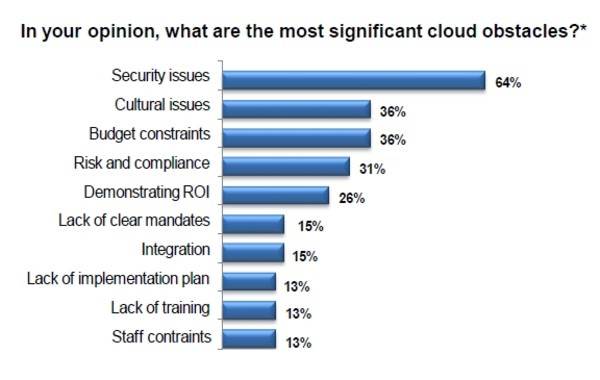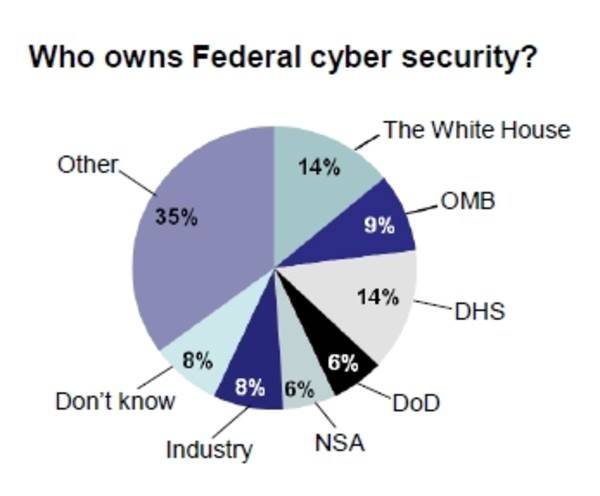When former FCC Managing Director Steven VanRoekel prepared to take the helm as America’s second Chief Information Officer, he told reporters he believed he could apply the lessons he learned as a senior director for Windows Server at Microsoft to the public sector. A new survey wishes VanRoekel good luck with that, but offers him a grim outlook on the perspectives of the federal IT workers whose policies he will help steer.

The survey is entitled, “Over to You, Mr. VanRoekel: A Federal IT Referendum on Change.” Released today by the public sector IT community MeriTalk, it measures responses from some 174 IT professionals. Among them, 64% believe security issues to be among the most significant roadblocks to government adoption of cloud services. Perhaps that’s not a shock, but maybe this will be: Number two on that same list of obstacles, coming in just above budget constraints, was something called “cultural issues.”
What are “cultural issues?” RWW asked MeriTalk spokesperson Whitney Hewson, who responded, “Good question.”

The “cultural issues” choice was left vague, without any examples provided, Hewson told us. But from the surveyors’ interpretation of responses, it was taken to include “the tendency to lean on ‘business as usual’ and agencies being unwilling to collaborate with one another in new ways, ways required for a shift to cloud services,” she said.
Some 71% of respondents were federal government employees, with an additional 7% employed with intelligence-related services including the Dept. of Defense. Five percent of respondents were state and local government IT workers.
Among federal IT workers responding, some 71% believe that federal IT policy has already improved, just in the few weeks since VanRoekel’s predecessor, Vivek Kundra, left office. Respondents told Meritalk by an overwhelming margin (92%) that cloud adoption “is a good idea” for federal IT. But in the wake of increasing security threats in the last year, their departments remain underfunded for the task of fighting them, say 59%.

Who’s ultimately responsible for federal IT security? When asked that blunt question outright, no single department chosen garnered more than 14%, with the White House tying with the Dept. of Homeland Security at the top of the list. Isn’t that a little scary?
“Unfortunately, we believe it’s accurate,” responded MeriTalk’s Hewson. “There is no clear leader at the helm, despite the requirement for government-wide / private agency collaboration. This should be an important priority for Mr. VanRoekel.”
Part of the underfunding problem may be due to a perception of low return on investment. More than a third of respondents said that cloud services would result in a reduction of fewer than 200 data centers in federal government by 2015, with 10% of respondents believing that more data centers would end up coming online anyway. And 26% of respondents believed cloud adoption would save the entire government less than $75 million. That’s with an “m.”
IT workers blame don’t blame a lack of vision on Kundra’s part so much as a lack of strategy. Apparently they’ve had enough vision to fill an encyclopedia. Some 60% of respondents would like for Kundra to have reduced the number of mandates imposed upon them, while 53% would have appreciated a realistic amount of time in which to make those lofty goals attainable.
Some of the respondents’ suggestions for VanRoekel on this front that MeriTalk shared with us included, “Focus on one goal at a time. Data center inventory/consolidation;” “Keep expectations realistic, keep the small guys in mind. Security, security, security” and “Strengthen mobility initiatives within government, highlight best practices, start Federal CTO council.”

















